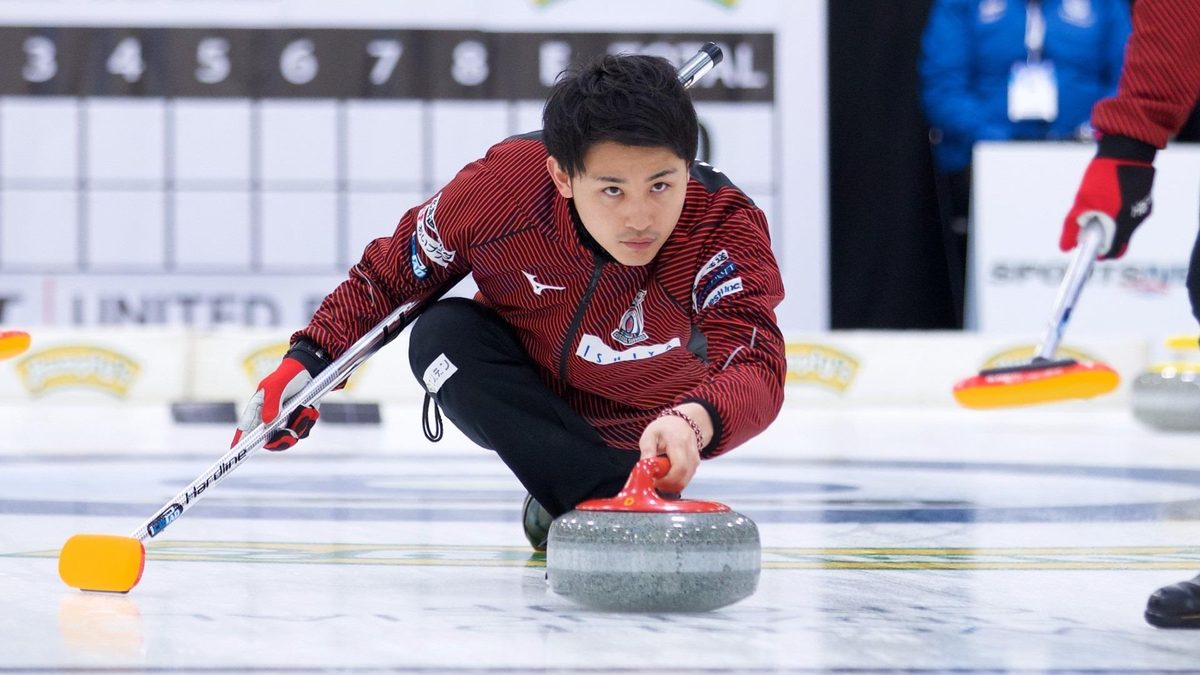
By Yuta Matsumura and Daia Koyano
PROFILE: YUTA MATSUMURA
• Born Sept. 29, 1989 (age 36), Karuizawa, Nagano Prefecture
• Former skip of Japan’s national men’s team
• Multiple World Championship appearances; best finish: fourth place at the 2019 World Men’s Curling Championship
• Retired from competition in 2025
• Currently active as a curling commentator and event organizer
JAPAN'S CURLING IS GROWING
Curling in Japan has experienced remarkable growth in recent years and is now entering a new phase. As a former national team curler who has spent years on the ice, I believe I’m in a unique position to share this transformation. Not from a distance, but from inside the sport itself.
In my role as a contributor, I will report on the current state and appeal of Japanese curling, offering stories that capture both its challenges and its charm.
ABOUT YUTA MATSUMURA
My name is Yuta Matsumura. I’ve represented Japan on the international stage, including multiple appearances at the world championships, finishing fourth in the men’s worlds in 2019. I retired from competition in 2025, but curling continues to be a core part of my life. These days, I stay involved through commentary, event management, and other projects that help grow the sport in Japan and beyond.
I was born in Karuizawa, Nagano, the birthplace of Olympic curling in Japan, where the sport was first officially included in the 1998 Winter Games. I began curling at the age of 12 and now live in Tokoro, Kitami City, Hokkaido, the heart of Japanese curling and home to many Olympians.
THE STATE OF CURLING IN JAPAN
In recent years, curling in Japan has grown rapidly in both competitive strength and public interest. National team games at the world championships are now broadcast live on TV. Grand Slam of Curling events are available with Japanese commentary, making world-class curling more accessible than ever.
One notable development is that the Japanese National Championships, which have traditionally been held in rural regions at local curling clubs, were hosted in Yokohama last season. The event was played on arena ice, marking the sport’s first major step into a metropolitan setting.
Interest in curling across Japan is at an all-time high. While the sport still holds a relatively minor position in the broader sports landscape, that’s exactly what makes this moment so exciting: there is still so much room to grow.
With strong performances on the international stage and increased media exposure, curling’s visibility in Japan is expanding steadily. Japan is still developing as a curling nation, which means we have untapped potential — not only in athletic performance, but also in fan engagement and global relevance.
WHAT I HOPE TO SHARE WITH YOU
As the contributor covering Japan, I will focus on the domestic curling scene and the national teams. I’m not a professional writer, but I’ve spent many years competing in both domestic and international tournaments. I believe my experience gives me insight that only someone who has lived the sport can offer.
I will be diving into topics like how national team selection works, how Japanese teams are adapting to international competition, and the cultural differences that shape curling across borders.
At the same time, I don’t want this to be one-way communication. I welcome your questions, your curiosity, your “why?”
I hope we can explore the world of Japanese curling together, not just as writers and readers, but as fans who care about where this sport is headed.
BRIDGE BETWEEN VOICES: DAIA KOYANO
My name is Daia Koyano, and my path in the sports world has been about connection — between languages, between athletes and fans, and between cultures. I was born and raised in Japan and later studied sports management in Victoria, Canada. Since then, I’ve had the privilege of working in many international sporting environments, including the Olympics and Paralympics.
I also gained valuable experience working with the production team at the Grand Slam of Curling. That opportunity exposed me to curling as top-level entertainment, gave me a chance to learn from some of the best in the industry, and connected me with people whose passion continues to inspire me. It was not only a professional education, but also a personal highlight that enriched my life.
In curling, I support Japanese teams through translation, interpretation, coordination of travel and training, and by ensuring that athletes feel understood and supported. I believe that language is not just about words: it’s about emotion, trust, and culture. It’s important to me that the athletes' true voices come through — every hope, challenge, and insight.
One unique aspect of our coverage is that Yuta and I will be working together as a two-person team. We have been close friends since our teenage years through curling, and now we are excited to bring our shared experience to this new role. With Yuta bringing the perspective of his world-class curling experience and me providing translation and cultural context, our goal is to share Japanese curling with clarity, depth, and authenticity for a global audience.
Most of all, I feel grateful. Through curling, I’ve been able to cross borders, gain experiences I never imagined, and build friendships with people around the world. It is this sense of connection that I hope to carry into every story we share.
For readers interested in learning more about my journey and experiences in sports translation and curling, some of my previous interviews can be found here:
• Mimosa Magazine: Supporting Athletes Beyond Language
• Workmill: The World of Sports Interpreting



